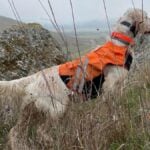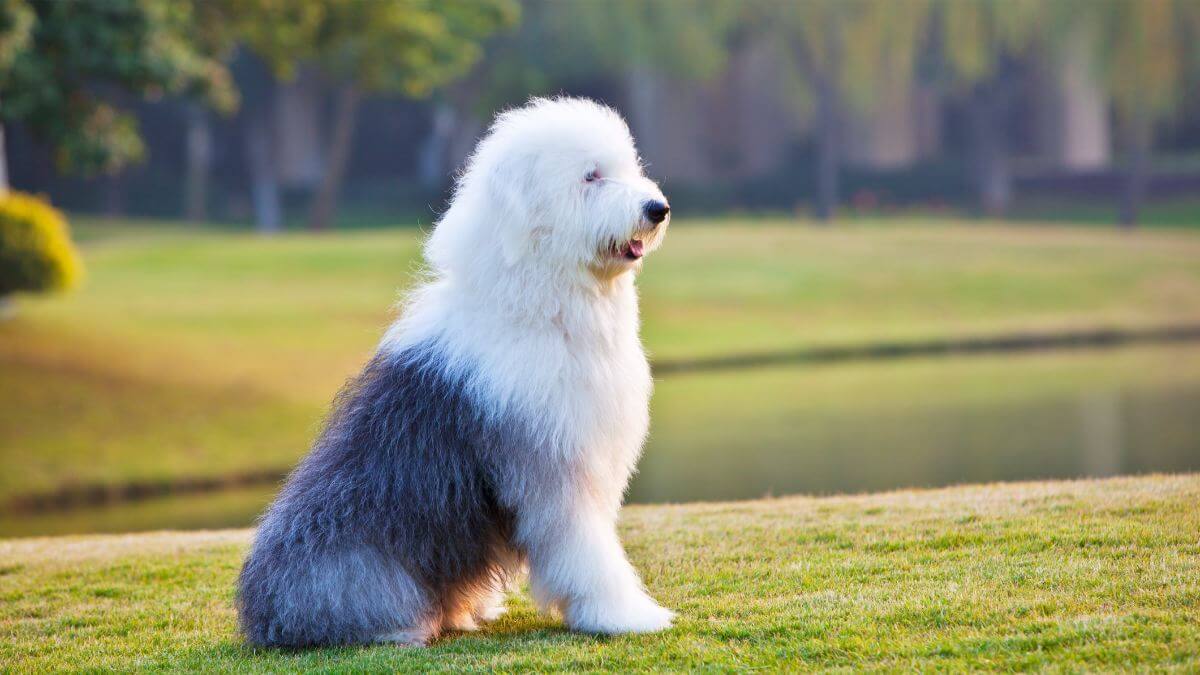
Home » The Old English Sheepdog

This article was originally published in Showsight Magazine, July 2013 issue.
The early pioneers of the Old English Sheepdog in the US were wealthy Americans, who traveled to England. They were very educated about the Bobtail and his working abilities along with the farming and climatic environment he worked in.
They originated in the Southwestern Counties, hence one of the first names they were called was “Sussex Sheepdogs” and they were also known as “Smithfields” because they helped take New Forest Ponies to the Smithfield Market.
The working conditions of a cold damp climate required a dog that was hardy with a weather-resistant coat. As a drover’s dog, they were required to have strength and stamina to go at a steady pace for long periods of time. To meet these requirements, the OES needed lung power, so they must have a deep chest with good spring of ribs—slab-sidedness was highly undesirable.
Along with good legs, the OES uses its head as a tool. Broad and square, the skull backs up the strong truncated muzzle. The eyes are covered with a fall of hair to protect them from the climate. They will nip at the stock to move them along, therefore they must have a strong truncated muzzle with a long, powerful underjaw.
The Breed Standard calls for strong large teeth with a bite that is level or tight scissors. The level bite was preferred because it did not tear the wool on sheep. Anything resembling a deerhound or poodle expression is undesirable.
The OES has a very unique body shape and gait. The Breed Standard allows for a trot or pace. OES pace to save energy. The body is pear-shaped, strong, and compact, with a rise over the loin and with low-set hocks, in order to pivot easily when handling stock.
The Breed Standard calls for: “When trotting, movement is free and powerful, seemingly effortless, with good reach and drive, and covering maximum ground with minimum steps.” Therefore, they MUST have good layback of shoulder, with a long upper forearm and good bend of stifle. In order to see above the stock, they are required by the Breed Standard to have a neck that is “Fairly long and arched gracefully.”
The first English Standard was written in 1888 and the first US Standard in 1904. Two English dog men, Henry Arthur Tilley and Freeman Lloyd, wrote the first US Standard and helped to found the Old English Sheepdog Club of America in 1904, which was accepted in 1905 by the American Kennel Club.
One of the hallmarks of the OES is their fabulous outgoing, happy temperaments, making them great with children. They live to please their owners, making them versatile in all manner of performance events, but they can be total clowns.
Although my first OES came from a puppy mill in Kansas, I figured out early on that he was not a good specimen. He did have a gregarious nature, which hooked me on the breed.
OES have magnificent shaggy coats that are any shade of blue or grey. The coat is a double coat of a very soft underpile that is waterproof, along with the very strong wiry guard hairs that shed the water & dirt. The hair shaft is banded with breaks that one can feel if run between one’s fingers. This break creates the shaggy look of the coat.
Grooming the OES is a labor of love to maintain their wonderful coat, but as pets, they can be kept in a short puppy trim easily.